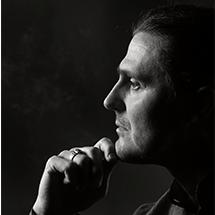ABOUT THE ESSENTIAL AND THE EMPTY
For those who seek the substantial and real in any manifestation of life, our environment’s emptiness is gradually becoming an ever-increasing problem. Our surroundings are filled with many empty objects — useful and necessary at first glance but made of such materials and in such an artless, standardized way that they seem lifeless and devoid of any power or tangible value. As such things grow in number, they create a sense of an environment that does not nourish our senses, and our life fades as a result, becoming impoverished and detestable.
Naturally, one is motivated to investigate and understand what “empty” objects are and what “filled” or “powerful” means. However, this does not only apply to objects. In fact, people may be the same — empty and faceless or filled and real. Thus, one wishes to find out the signs of everything that can be called Real to begin consciously shaping one’s living environment, making it lively, pleasing to the senses and nourishing one with natural forces.
The root of the Russian word «настоящее» (“real”) includes both «стОящее» (“worthy”) and «стоЯщее» (“standing”). There are not many standing objects in nature — only mountains, trees, fire and man. Such a small number indicates not only value but also belonging to one rod — to one worthy essence, coming from Heaven to Earth and forcing matter to rise vertically.
The essence of vertical natural phenomena lies in their characteristic pyramidal shape, pointing up to Heaven — their highest origin.
Of all the vertical natural phenomena, the human body is the most tangible to us, since it is always with us, or rather, on us. We wear it like clothes and through it perceive everything that happens both outside and inside. This makes our body the most real and universal measure against which to compare everything we want to rate in terms of “realness”.
UNIVERSAL MEASURE
The higher we rise in the levels of our body, the more it becomes filled with something substantial and important to us. In the range of legs — from the feet to the hips — the body is empty and has no center. Higher, at the level of the pelvis, it becomes filled — less so in women and more in men. At the very top the body is full of sophisticated meaning that defines our thinking, decisions, actions and results.
If we use our body as a measure of the Real, then everything around us can be sensed by either the upper or the lower part of the body, as filled or empty. We enjoy taking a wooden object with our hands and holding it close to our body as something filled, while we do not feel the same about plastic. However, if we walk on it, we may not feel any discomfort, since plastic is empty and this corresponds to the lower part of our natural scale.
To feel something through the body means to pay attention to the subtle body sensations that arise when we are looking at, touching or merely thinking about the object in question. It can be expansion or contraction, lightness or heaviness, strength or weakness, warmth or coolness, or simply feeling that when scanning our body with our attention, we tend to linger on a certain level of it.
The upper part of the body is “more real” for us and therefore it has a greater capacity to feel and recognize the Real in the environment. Having accepted the opportunity to use the body as a measuring scale, and having experienced how simple and natural it is, we can now divide it into a greater number of levels in order to identify more detailed characteristics of the objects evaluated against the Real.
